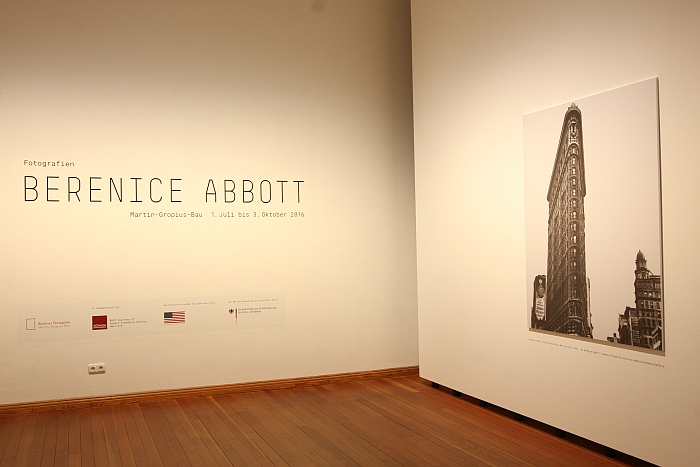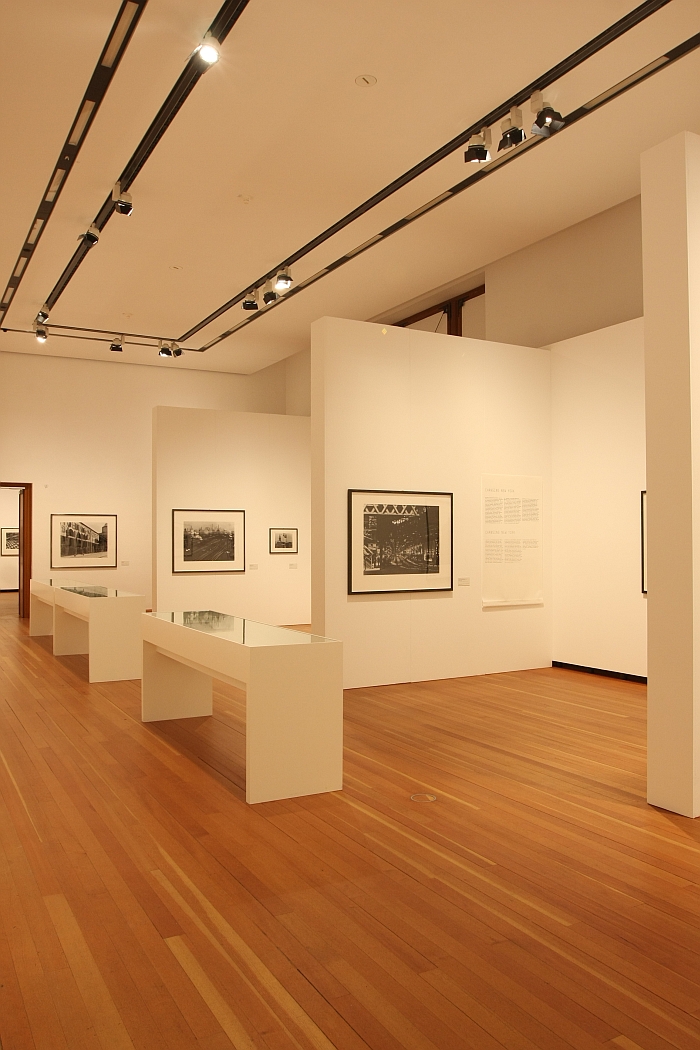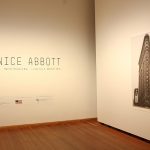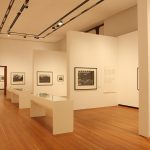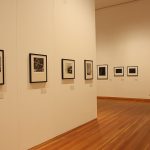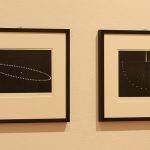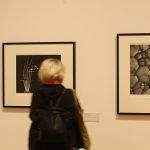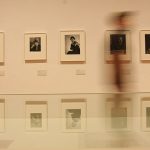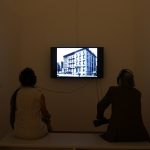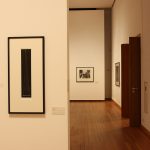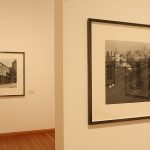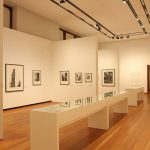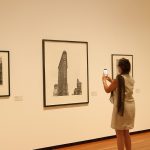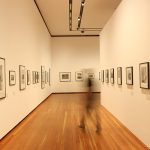Berenice Abbott – Photographs @ the Martin-Gropius-Bau Berlin
“Photography is the medium par excellence of our time. As a visual means of communication, it has no equal.”1 So wrote the American photographer Berenice Abbott in 1941.
How she set about proving such can be explored in the exhibition Berenice Abbott – Photographs at the Martin-Gropius-Bau Berlin
Born in Springfield, Ohio in 1898 Berenice Abbott initially, and only very briefly, studied journalism at Ohio State University before moving to first bohemian New York in 1918 and subsequently avant-garde Europe in 1921, where, and following a period in Berlin, she ended up in Paris working as an assistant to Man Ray; the two knew each other from New York days, and according to Gaëlle Morel, Abbott was hired “because she had no prior experience in photography, and Man Ray could train her to print in accordance with his own methods”2 Obviously a quick learner, in 1926 Berenice Abbott established her own studio in Paris, largely concentrating on portrait photography; in addition to the largely interchangeable fashionable Parisian party people, her subjects included leading cultural figures of the day such as James Joyce or Jean Cocteau.
In 1929 Berenice Abbott returned to New York in search of a publisher for her book about the French documentary photographer Eugène Atget, and was so overwhelmed by the way the city had grown and evolved in the intervening eight years she decided to bid au revoir to Paris and return to New York. And for all to photograph the evolving city, in its pre-depression blooming – very much in the way Eugène Atget had once documented evolving, post Haussmann, Paris.
After several unsuccessful attempts to find a backer, in 1935 the Federal Art Project, a programme of the depression era Works Progress Administration, WPA, which sought to support artists, agreed to fund her project to photograph New York and thus to document the changing urban environment. The culmination of this work was some 300 negatives, the 1937 exhibition “Changing New York” at the Museum of the City of New York and in 1939 publication of the book “Changing New York”: but for all the project resulted in a collection of photographs which remains one of the defining documents of 1930’s New York architecture and an archive not only interesting for shots such as Abbott’s portrait of the Flatiron building in Manhattan, but for the fact it covers the whole city with a self-evident parity, presents the suburbs, rich and poor, with just the same concentration, interest and critical distance, as it does the new downtown skyscrapers.
Despite being arguably best known for “Changing New York” and her other documentary works of the 1930s, Berenice Abbott is and was much more than just New York and the 1930s, and Berenice Abbott – Photographs also includes examples of her portrait photography, of works created on a 1954 road trip along the so-called U.S. Route 1 – a 3,800 km highway running down America’s East Coast from the Canadian border to Key West – and, and arguably representing one of the high-points of Berenice Abbott – Photographs, examples of her scientific photography. Began in 1939 principally as a means by which to help explain the laws of science and the nature of nature to as wide a lay public as possible, scientific photography would occupy Berenice Abbott until the early 1960s, led her to invent new pieces of photography equipment, saw her briefly appointed as Head of Photography at Science Illustrated magazine, and has left us with the most delightful, endearing and utterly fascinating images of ball bearings, waves, body parts and soap bubbles. Yes, in their naivety and two dimensionality they all scream analogue. No we wouldn’t swap a single one of them for a modern digital impression.
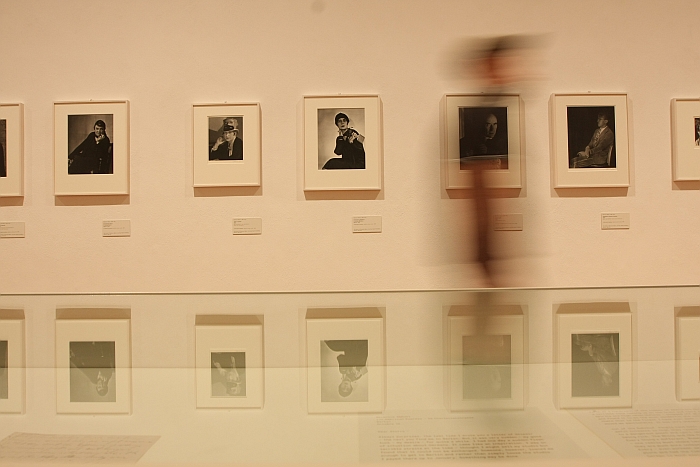
Exampes of Berenice Abbott’s 1920s portrait photography by Berenice Abbott, as seen at Berenice Abbott – Photographs, the Martin-Gropius-Bau Berlin
There is, when all is said and done, an awful lot of high-faluting nonsense written about Berenice Abbott’s photography. For all her architecture photography. Unquestionably well composed, well considered and technically correct works, they generally aren’t anything “spectacular”. That said we have long found ourselves strangely attracted to them. Only ex post facto did we learn one possible reason: as an advocate for “straight” photography Berenice Abbott was fiercely against any artistic manipulation of photos, what you saw was what the photographer saw and was able to catch. Something that isn’t necessarily always the case, for as we noted in our post from the exhibition New Architecture! Modern Architecture in Images and Books at the Bauhaus Archiv Berlin, architecture photographers have long been inclined to retouch and rework their photos, Photoshop et al just made it easier. For Bernice Abbott such thoughts didn’t come into question, “[Mathew] Brady’s Civil war photographs could not make their intense emotional appeal if we had any idea in looking at them that they were doped-up fakes like Hearstian war “atrocity” pictures….. Because of [photography’s] value and usefulness, we would be very bigoted and even irresponsible to seek to legislate a narrow perfectionism for the medium….Is not photography good enough in itself, that it must be made to look like something else, supposedly superior?…. What makes art is the man who feels, thinks, labors, sweats, dreams, hopes. This is true with photography as with any other medium”3
By practising this attitude Berenice Abbott created works that exist on and through her interpretation of a scene. And for all the moment of conception; rather than as an essay of an idealised location built up over time. In addition Berenice Abbott’s New York photos are largely about the buildings and the urban environment, this is no “street photography”, yes there are people to be seen but they are generally in context of the setting and not the principle focus. Nor are her works a social and cultural documentation à la Jacob A. Riis’s “How the Other Half Lives”. The principle focus is the buildings. Where they are. How they are constructed. How they are used. And in our ever evolving world of ever more temporal architecture and the often necessary, often unnecessary, demolition of buildings, honest documentation is important if future generations are to be able to learn from the mistakes we invariably make, as well as from the brave decisions that may regularly be condemned as barbarism at the time.
Presenting around 80 photos by Berenice Abbott, backed up by letters, magazine articles, books and a video, Berenice Abbott – Photographs is a concise exploration of Berenice Abbott’s canon, if a very satisfying, very well conceived exploration, and as such is not only a good place for all unfamiliar with her work to become familiar, but a nice, untroubling, summer holiday season, rainy day Berlin, reminder for all who are familiar with her work to reacquaint themselves with some key aspects.
Berenice Abbott – Photographs runs at the Martin-Gropius-Bau Berlin, Niederkirchnerstraße 7, 10963 Berlin until Monday October 3rd
Full details can be found at www.berlinerfestspiele.de
1. Berenice Abbott, A Guide to Better Photography, Crown, New York 1944
2. Gaëlle Morel, Berenice Abbott (1988 – 1991): Photographs, exhibition catalogue, Jeu de Paume, Paris & Ryerson Image Centre at the Art Gallery of Ontario, Paris 2012
3. Berenice Abbott, A Guide to Better Photography, Crown, New York 1944
- Berenice Abbott – Photographs at the Martin-Gropius-Bau Berlin
- Berenice Abbott – Photographs at the Martin-Gropius-Bau Berlin
- Berenice Abbott – Photographs at the Martin-Gropius-Bau Berlin
- Scientific photos by Berenice Abbott, as seen at Berenice Abbott – Photographs, the Martin-Gropius-Bau Berlin
- Soap Bubbles by Berenice Abbott, as seen at Berenice Abbott – Photographs, the Martin-Gropius-Bau Berlin
- Examples of Berenice Abbott’s 1920s portrait photography by Berenice Abbott, as seen at Berenice Abbott – Photographs, the Martin-Gropius-Bau Berlin
- The video biography of Berenice Abbott, as seen at Berenice Abbott – Photographs, the Martin-Gropius-Bau Berlin
- Berenice Abbott – Photographs at the Martin-Gropius-Bau Berlin
- Berenice Abbott – Photographs at the Martin-Gropius-Bau Berlin
- Berenice Abbott – Photographs at the Martin-Gropius-Bau Berlin
- If you can’t get to Manhattan… The Flatiron building by Berenice Abbott, as seen at Berenice Abbott – Photographs, the Martin-Gropius-Bau Berlin
- Berenice Abbott – Photographs at the Martin-Gropius-Bau Berlin
Tagged with: Architecture, Berenice Abbott, Berlin, New York, Photography
